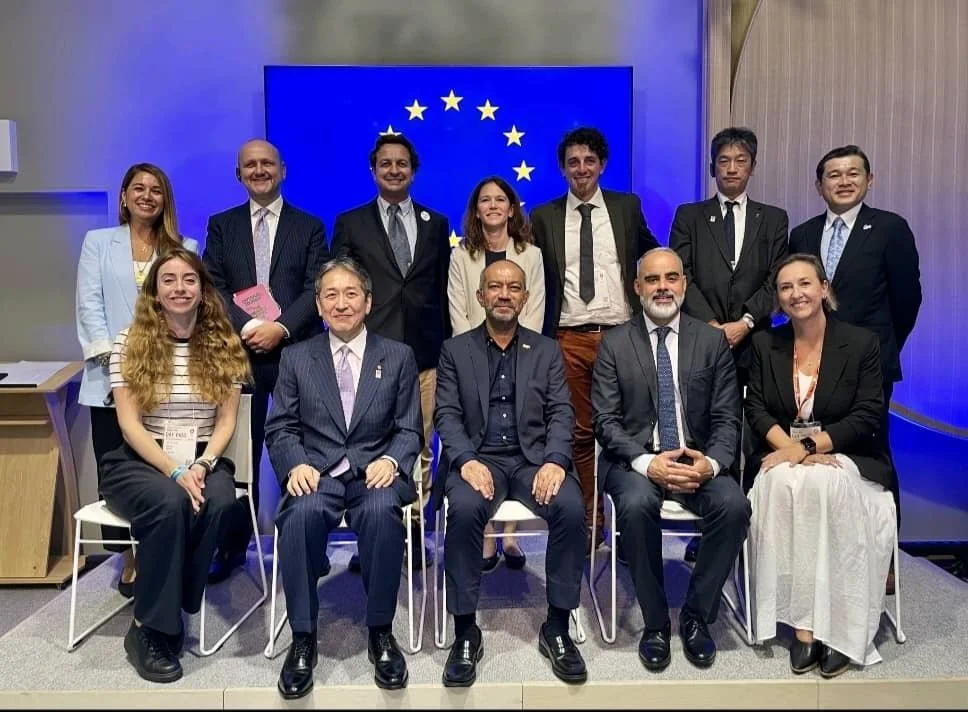PATA CEO Highlights Sustainable Pathways for Japan-EU Travel at World Expo 2025
BANGKOK, October 6, 2025 – The Pacific Asia Travel Association (PATA) reinforced its commitment to cross-regional tourism, as Chief Executive Officer Noor Ahmad Hamid delivered the keynote address at the “Shaping the Future of Japan-EU Travel,” event held at the EU Pavilion during World Expo 2025 in Osaka, Japan.
The event was officiated by Apostolos Tzitzikostas, Commissioner for Sustainable Transport and Tourism at the European Commission, and Takeshi Nakano, Vice Commissioner of the Japan Tourism Agency (JTA). It was organised by the European Travel Commission (ETC), one of PATA’s valued partners, represented by CEO Eduardo Santander, in collaboration with the European Union, and supported by the JTA, a public agency under Japan’s Ministry of Land, Infrastructure, Transport and Tourism (MLIT).
With tourism flows in both regions heavily concentrated in a limited number of hotspots, the programme focused on how smarter, more balanced tourism can drive recovery and sustainable growth in two-way travel. It covered strategies to diversify travel patterns, strengthen cross-border connectivity, and target responsible travellers through joint marketing and promotion.
“First and foremost, I must express my gratitude to Eduardo Santander, CEO of ETC, his esteemed team, and Marlene Bartes, Policy Officer, Directorate-General for Education, Youth, Sport and Culture of the European Commission, for extending the invitation to PATA,” Hamid noted. “I am honoured to be part of this important dialogue that not only strengthens the cross-regional bond between Japan and the EU, but also creates new opportunities for the Asia Pacific region in advancing cooperation, knowledge exchange, and sustainable growth in tourism.”
“The relationship between Japan and the European Union is one of the most significant economic and cultural corridors in the world. Tourism is not merely a component of this relationship; it is a primary driver of it, fostering mutual understanding and generating substantial economic value. According to FITUR, Japanese travel to the EU is projected at 4.87 million for this year, representing a staggering 67% increase from 2023. This signals a powerful, pent-up demand for long-haul, high-value European travel experiences.”
Hamid further noted that while past achievements and future prospects are significant, they have also given rise to pressing challenges, including mass tourism and high levels of carbon emissions. To address these emerging issues, he proposed applying PATA’s Integrated Destination Facilitation framework to the context of Japan-EU travel.
The holistic, strategic model is designed to engineer a more sustainable future through four key pillars:
Enabling Policies: Manage visitor distribution away from hotspots and mitigate economic impacts on local communities.
Smart Infrastructure: Invest in connectivity, particularly rail, to unlock secondary and tertiary destinations.
Targeted Marketing: Shift from volume-driven to value-driven strategies, attracting high-yield, low-impact travellers.
Community Engagement: Involve local populations as partners, ensuring they benefit from tourism while preserving cultural heritage.

